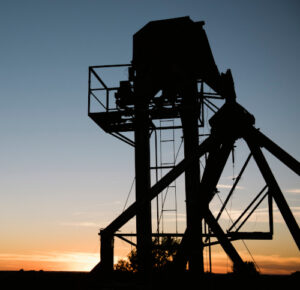
The mine shaft ran dark and deep, a jagged mouth in the belly of a hillside that no longer had a name on any modern map. There was a time when prospectors whispered about it, when families lit candles for those who never came back from its shadowy corridors. Now, it’s buried beneath brush and dust in the far reaches of Mpumalanga, a place that once promised fortune and delivered only silence. But that’s how stories about cursed gold often begin, not with riches, but with something left behind.
South Africa has long stood as a symbol of gold’s magnetic pull. Since the Witwatersrand rush in 1886, this land has been both altar and battleground for the precious metal. But not every vein led to wealth. Some were mined and then abandoned, not because the ore ran dry, but because the people around it believed something darker was at play, bad luck that turned fatal, gold that brought madness, shafts that collapsed under clear skies. These weren’t just engineering failures. To those who lived near them, they were omens. Superstitions hardened into belief, belief into taboo. And eventually, the gold stayed buried.
You won’t find these places on tourist routes or listed in the Chamber of Mines archive. But the tales linger, in overheard barroom mutterings in Sabie, in warnings from old women selling vetkoek near derelict equipment yards, in the knowing glance of a retired geologist who once walked away from a lucrative claim because something just didn’t sit right. One such mine was dubbed “Eka’s Pit,” after a foreman who descended one morning with a team of six and came up alone, clutching a locket not his own and refusing to speak for the rest of his life. The company blamed methane pockets. The locals knew better. They said the gold in that shaft had been disturbed by greed, and greed never goes unpaid.
Across cultures, cursed gold is hardly new. Greek myths speak of King Midas and the hunger that turned even food into wealth. In South America, conquistadors chased golden cities only to vanish into jungles that refused to return them. In West Africa, tribes spoke of spirits dwelling in riverbeds lined with nuggets. But South Africa’s cursed gold feels different, closer to the surface, more modern, threaded into communities that remember mines not as emblems of progress but as scars.
 Take the village of Ga-Mampa, near Limpopo. In the late 1970s, a small artisanal dig uncovered an unusually rich seam. By the time government officials arrived to investigate, several men were already dead, one from a rockfall, one from fever, and a third by his own hand. The dig was sealed. Locals now refer to it as “The Whispering Hole,” and no one walks near it after sundown. Children are told the story the way others are told fairy tales, with caution, with reverence, with the suggestion that some things should stay in the ground.
Take the village of Ga-Mampa, near Limpopo. In the late 1970s, a small artisanal dig uncovered an unusually rich seam. By the time government officials arrived to investigate, several men were already dead, one from a rockfall, one from fever, and a third by his own hand. The dig was sealed. Locals now refer to it as “The Whispering Hole,” and no one walks near it after sundown. Children are told the story the way others are told fairy tales, with caution, with reverence, with the suggestion that some things should stay in the ground.
In the highveld regions, some miners used to carry salt in their pockets, not to flavor lunch, but to ward off spirits that could lead them deeper into danger. Salt, they believed, disrupted the pathways of restless souls. Others spoke of “black gold”, veins that glittered wrong, veins that took more lives than they yielded grams. In mines where deaths were too frequent and never quite explainable, even hardened engineers would ask for the site to be “cleansed.” These rituals were rarely in the company handbook, but they were observed nonetheless.
What’s most striking about these stories isn’t the fear, they’re not horror tales. They’re about boundaries. The belief that gold, while alluring, must be approached with respect. That wealth extracted too fast, too violently, comes with a cost. In this way, cursed gold is more than legend, it’s a warning disguised as folklore. A way for communities to remember what gets lost when the earth is taken for granted.
Today, much of this has been paved over by industrialization. The mega-mines are mechanized, regulated, digital. The workers wear hardhats with sensors. There are emergency procedures and satellite-linked monitoring. But still, you’ll hear of oddities. Drill rigs that inexplicably short out. A section that collapses with no seismic warning. A seasoned blaster who resigns mid-shift because of a dream he had three nights in a row. Engineers may not put it in reports, but they don’t laugh about it either.
In an economy still clawing for equity, where mining is often touted as a driver of upliftment and transformation, stories of cursed gold exist uncomfortably alongside slogans of growth. Yet perhaps they serve an essential role, reminders that history has layers not easily excavated. That some gold is best left where it lies, and that in the pursuit of profit, the land’s memory should never be underestimated.
Because not all gold glows for the same reason. Some gleams with promise. Some with pride. And some, quietly, with warning.



